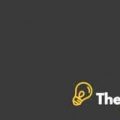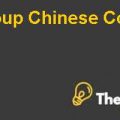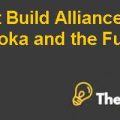
General Background
The European Union (EU) is a political and economic union of twenty-eight member states that are located in Europe. (See appendices) It operates through an organized system of inter-governmental negotiation of the member states and a number of supra-national independent institutions such as the European Parliament, the Council of the European Union, the European Central bank, the European Council, the European Commission, the Court of justice of the European Union and the Court of Auditors. There is a proper election criterion for the election of European Parliament, which is conducted through the European Union Citizens after every five years. It traces its origin from the European Economic Community (EEC) and the European Coal and Steel Community (ECSC), which was formed by the innermost six countries i.e. France, Italy, Belgium, Netherlands, West Germany and Luxembourg in 1951 and 1958. Later on the community had grown in size and jurisdictional areas by the accession of a number of new member states and had also added a number of new policy areas that had enhanced its power as well. The European Union was established under its current name by the Maastricht Treaty in 1993. However, the latest major constitutional amendment came into reality in 2009 in the form of the Treaty of Lisbon. The EU had experienced different enlargement phases in the history, but the 2004 and 2007 enlargements were unusual both in terms of the high number of countries that were willing to join the EU and the challenges that were presented in the process of their accession for the EU, as the economic and political situation of these countries were not impressive, hence they required more preparation before they could join the EU. (See Appendices)
If a country wants to become a member of the EU, it has to meet the Copenhagen Criteria, which was defined by the European Council at a meeting in Copenhagen in 1993. According to these criteria a country needs to have a stable democracy that respects the rule of law and human rights, it must have a functioning market economy and should be capable to accept the obligations of membership including the European Union law. Turkey, Iceland, Montenegro, Macedonia and Serbia are five countries that are recognized as potential candidates for the membership of the EU. However, later on in June 2013 the European Commission was informed by the Foreign Minister of Iceland, Gunnar Bragi Sveinsson that the newly elected government wanted to put the negotiations on hold. The basic function of the EU is to establish healthy relationships within identifiable boundaries among the member countries and to provide them with free trade transits to encourage trade and commerce among all these countries. There are four countries, i.e. Norway, Iceland, Switzerland and Liechtenstein that form the European Free Trade Association (EFTA), but these countries are not the members of EU except Iceland, who had applied for the membership of the EU in 2009 due to the Icelandic Financial crises of 2008-2011. The concept of the single-market structure was developed by the execution of an agreement i.e. the Agreement of the European Economic Area in January 1994, which brought together the three EEA EFTA States specifically Norway, Iceland , Liechtenstein and the member states of the European Union. The EEA agreement had provided a clear understanding of the EU legislation covering the four freedoms i.e. the free movement of services, goods, capital and person among the EU members. This agreement had also provided a straight cooperation in other important areas such as education, the environment, research and development activities, social policy, consumer protection, culture and tourism, which was collectively known as “Flanking and Horizontal” Policies. This agreement had provided a guarantee of equal opportunities, rights and obligations within a single market for economic operators and citizens in the EEA. However, the agreement did not cover some of the EU policies as well viz. Common agriculture and Fisheries policies (Although it contained a provision on various aspects of trade in fish and agricultural products), Customs unions, Common trade policies, Common foreign and Security policy, Home and Justice affairs (even though the member countries of EFTA were part of the Schengen area and the activities of the European Monetary Union (EMU)................................
This is just a sample partial case solution. Please place the order on the website to order your own originally done case solution.












